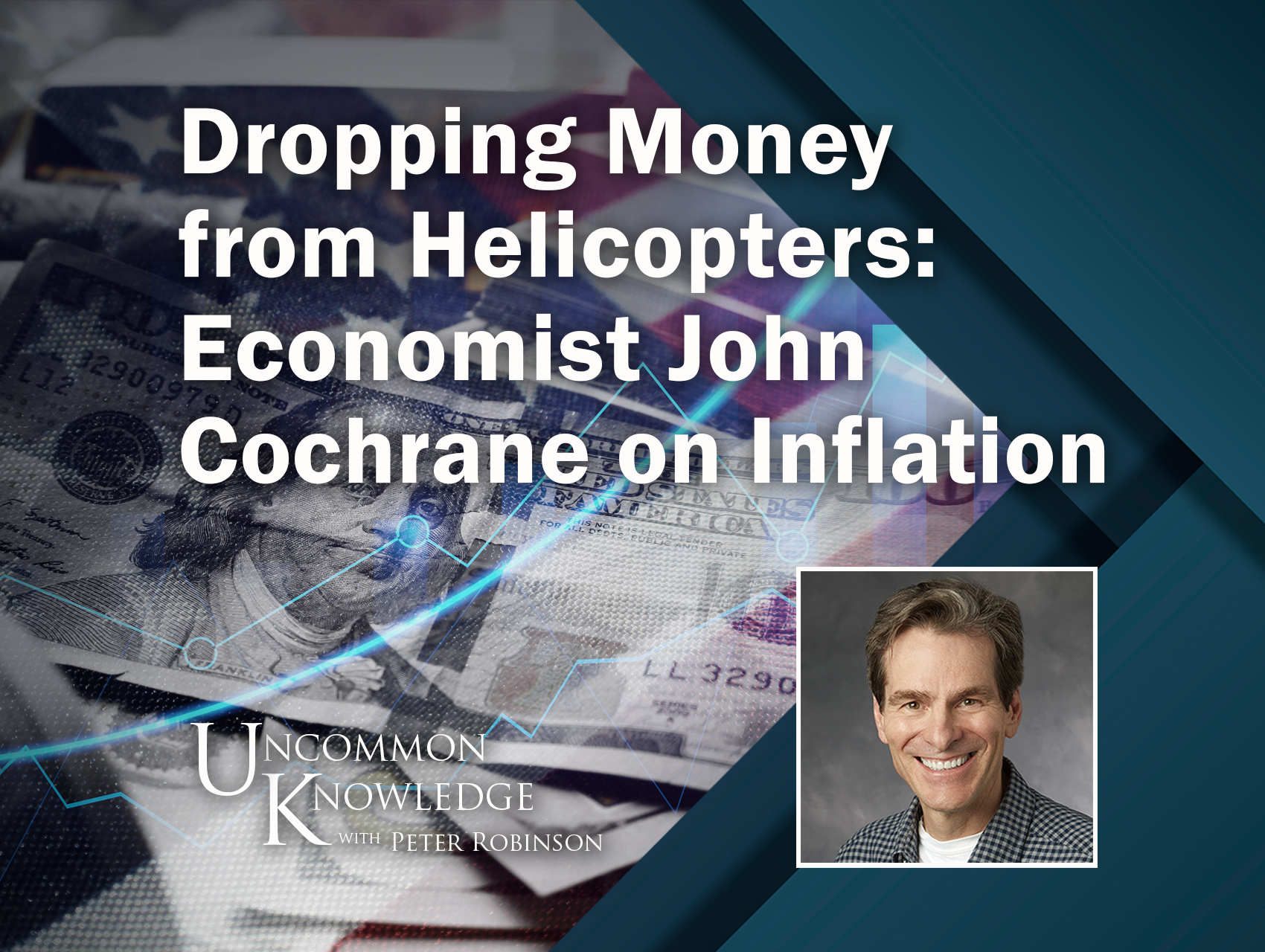Two great videos just dropped related to fiscal theory.
The first is an "Uncommon Knowledge" interview with Peter Robinson. We start with fiscal theory and move on far and wide. Peter is a great interviewer, and the Uncommon Knowledge production team put together a great video of it. Pick your link: Video at Hoover (best, in my view); Hoover event page with podcast, links and more info, Youtube, Twitter, Facebook.
Second, Michael Strain at AEI moderated a great panel discussion on fiscal theory with me, Robert Barro, Tom Sargent and Eric Leeper. Three of the founding fathers of fiscal theory offer thoughtful comments, and Michael had provocative questions. I start with a 20 minute presentation, with slides, so this is the most compact "what is the fiscal theory" video to date. It's at the AEI event page or Youtube


Excellent videos, and probably the most intuitive and internally consistent model of inflation around. It helps that it follows naturally from principles of finance; if one accepts that the discounted value of expected future dividends is a real (albeit difficult to observe) variable which determines share price, then with a couple innocent assumptions (cash is government debt), one is led to accept the FTPL.
ReplyDeleteHopefully this disseminates throughout the profession in the next years/decades and into minds of mainstream economic journalists and reporters, because the state of commentary on inflation is atrocious.
Congratulations, and in a just-world you will win a Nobel prize for this work someday.
What is the implication for non-government debt and equity prices in the fiscal theory of the price level when expected value of surpluses going up/down? Are these securities considered as part of the price level and get 'inflated'?
ReplyDeletePeter Robinson is always great in all his interviews.
ReplyDeleteYou seem to say M2 has no impact and yet M2 had exploded some time before inflation rose(lags of course); and has recently gone quite negative. Seems hard to overlook it short run; long run FTPL has strong basis to it.
ReplyDeleteBasic credit analysis of creditworthiness of USG seems to support the view that for now and foreseeable future the debt load of USG is acceptable to market participants as credit analysis takes in to account a whole host of variables. At point in time markets question the credit of USG will be when sell off of T Bonds takes place and FTPL comes in to play. So, seems a bit of common sense is at play here unless one views all buyers of USG as dumb, but no matter for if so when they smarten off and sell off T bonds the Prof will see substantiation of his FTPL view.
ReplyDeleteHey John, ~31 minute mark you mention the fed purchases treasuries and prints up interest paying reserves and this shouldn't have much of an effect (1st order). I'm with you there... but you kind of ignore the large scale assets of MBS held by the FED (I think around $2.6 Trillion). Does this change anything? More generally, suppose the fed only purchased other assets besides treasuries (or us securities), would your answer change?
ReplyDeleteTo the usual first order, it doesn't change much. MBS are treasury guaranteed against default risk, so essentially treasury debt. Fed buying them just transforms them to overnight treasury debt. There is a corresponding asset; MBS are backed by mortgage payments not just taxes. but B/P = EPV(s) incudes the value of government assets on the right hand side.
DeleteWhat about a central bank buying non government guaranteed debt? (The economic question not the political one)
DeleteNon govt guaranteed debt.
DeleteMean anything?
There is however still something I can't really wrap my head around. According to the FTPL, wouldn't interest rate policy tightening be self-defeating as they increase the interest payments on government debt and further undermine the public confidence in the government's ability to repay it, which is presumably at the root of the initial surge of inflation? Or is it that the aggregate demand effect of monetary policy more than compensates the inflationary effect of higher debt servicing? What am I getting wrong? This being said, I absolutely loved the episode.
ReplyDeleteGreat video and explanation! Very fascinating stuff to understand current and historical events. This is a stupid question but what is the difference between the government printing money and the government borrowing money?
ReplyDeleteJohn, what happens to FTPL when a large portion of obligations are essentially inflation-linked? TIPS, social security, healthcare are all explicitly or implicitly tied to inflation.
ReplyDeleteAt the extreme, what if a country were financed 100% with inflation-linked bonds?
See Ch. 8 section 1, "Indexed debt." Indexed debt, like foreign currency debt, is like corporate debt -- repay or default. Nominal debt, like corporate equity, can lose value via inflation. For FTPL to work, you need something real and something nominal in the equation. If there is all indexed debt, and no cash on the left, and if surpluses are completely fixed in real terms on the right, FTPL fails. You can have indexed debt and surpluses depend on the price level s(P); then b = S(p) still determines the price level.
Delete